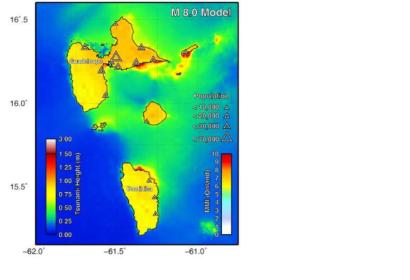USGS and French researchers studying the plate boundary in the Lesser Antilles region—the area where 20 of the 26 Caribbean islands are located—estimate that enough unreleased strain may have accumulated offshore of Guadeloupe to potentially create a magnitude 8.0-8.4 earthquake, as USGS announced on its website. The paper was recently published in the Geophysical Journal International.
This is especially critical since there is low awareness of the elevated earthquake risk in this region. "Perception that a mega quake can occur in the Caribbean is low because none have been observed over the past century, and the rate at which the tectonic plates converge is fairly slow," said USGS scientist Gavin Hayes, lead author of the paper. "Nevertheless, we show that enough unreleased strain may have accumulated on the subduction zone since the 19th century to generate a mega quake in the future."
Based on historic strain release computations and previous research, the research team modeled several scenario earthquakes in the 7.5-8.5 magnitude range, using a variety of potential earthquake rupture areas and utilizing the USGS ShakeMap and PAGER software packages. Strong ground shaking during the scenario earthquake would likely cause loss of life and costly damages.

